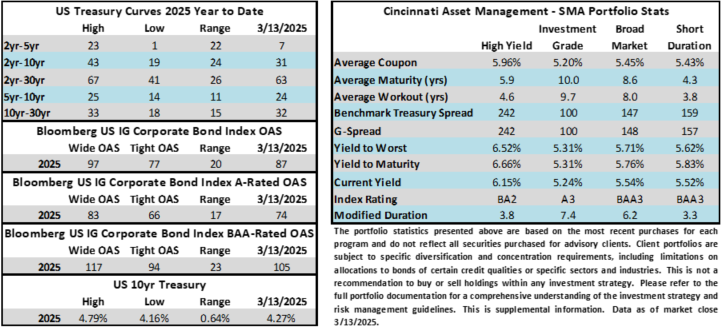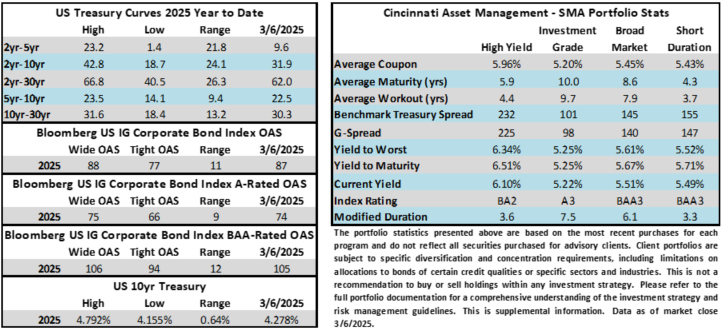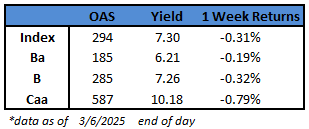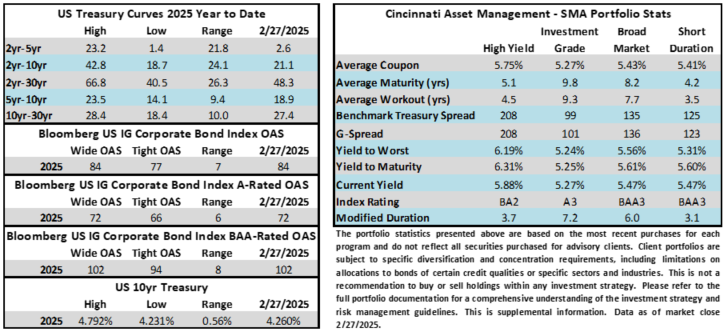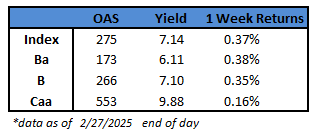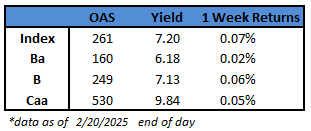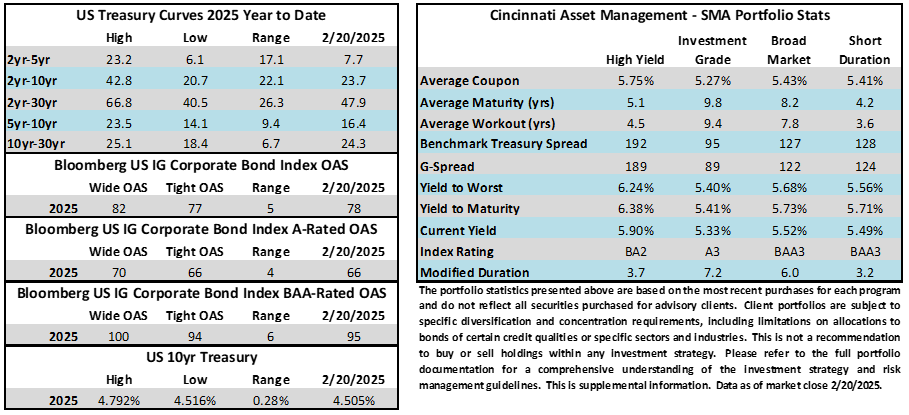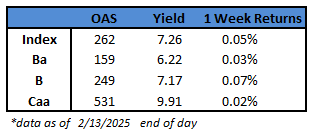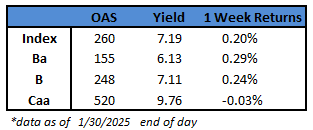(Bloomberg) High Yield Market Highlights
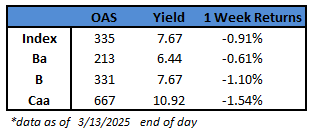
- US junk-bond yields surged to seven-month highs as risk premiums rose to levels not seen since August, driving the biggest one-day loss since December, amid the escalating trade war after Donald Trump threatened more tariffs on European exports.
- The risk premium for junk bonds, as reflected in spreads, closed at 335 after widening 22 basis points on Thursday, the biggest move in seven months.
- Credit spreads are not pricing in enough risk, Barclays strategists Brad Rogoff and Dominique Toublan wrote on Friday. Barclays revised its spread forecast for 2025 to 400-425 basis points versus its earlier forecast of 275-300 basis points
- As junk bonds plunged, yields jumped the most in seven months to close at 7.67%.
- Amid tumbling bond prices, rising yields and widening spreads, the primary market stalled on Thursday as US borrowers remained on the sidelines. Just $4b was priced this week compared with $8b last week
- The losses in the junk-bond market extended across ratings. CCCs, the riskiest segment, suffered the worst losses since last summer.
- CCC yields approached 11% on Thursday, rising 28 basis points. Yields were at a new six-month high
- BB spreads closed at 213, also a seven-month high. Yields closed at 6.44%, a two-month high. BBs racked up a loss of 0.33% on Thursday, the biggest one-day loss this year
This information is intended solely to report on investment strategies identified by Cincinnati Asset Management. Opinions and estimates offered constitute our judgment and are subject to change without notice, as are statements of financial market trends, which are based on current market conditions. This material is not intended as an offer or solicitation to buy, hold or sell any financial instrument. Fixed income securities may be sensitive to prevailing interest rates. When rates rise the value generally declines. Past performance is not a guarantee of future results.
